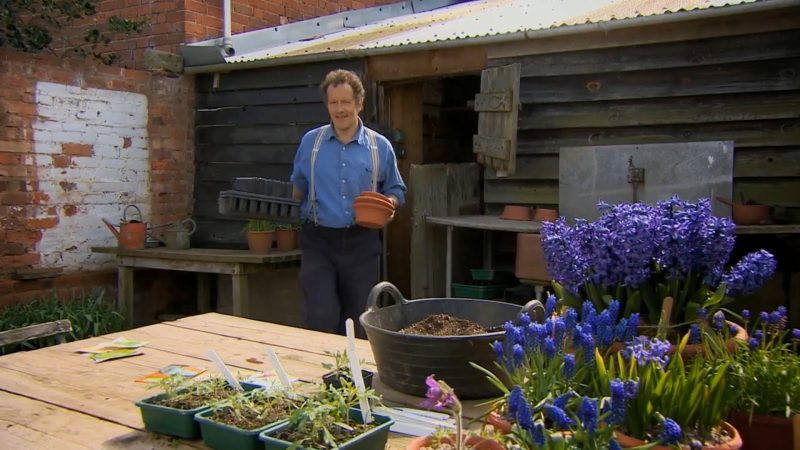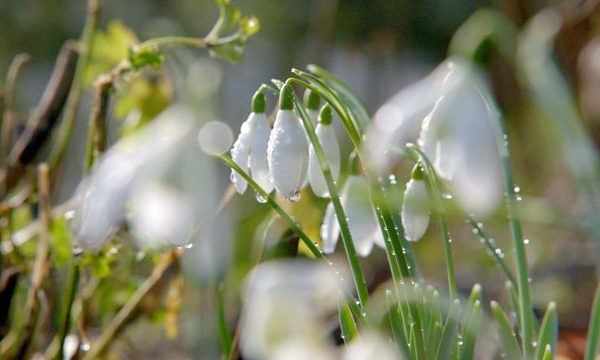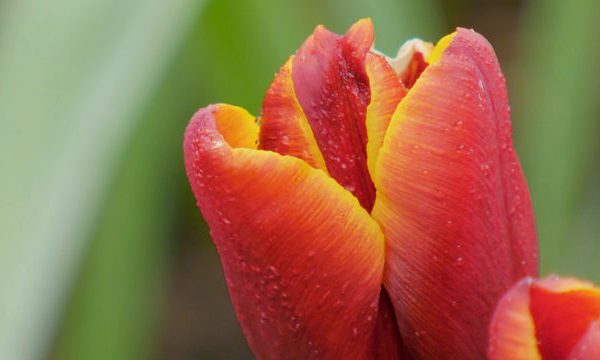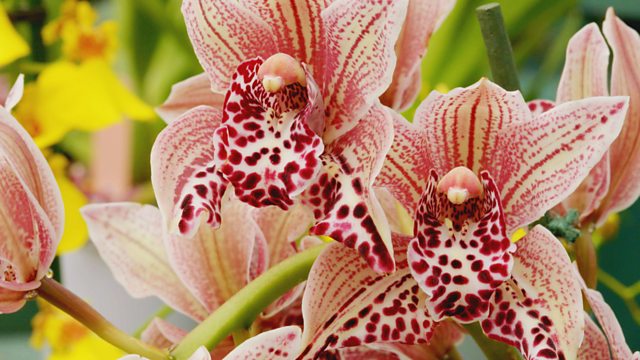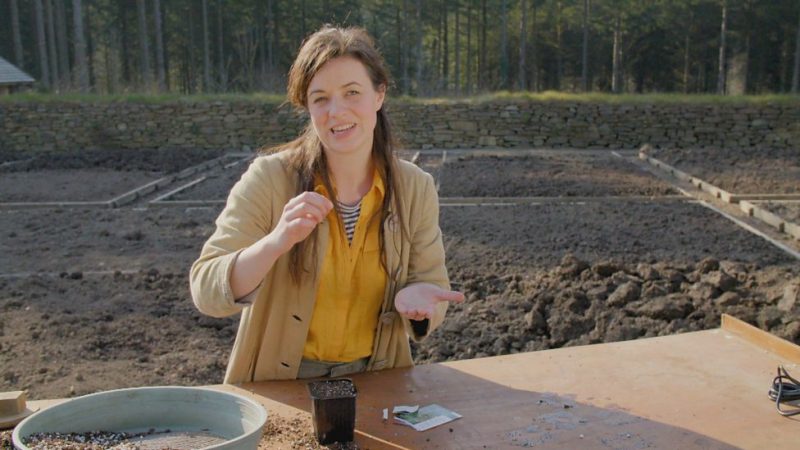In Gardeners World episode 3 2016, as part of his planning for summer, Monty Don begins to sow annual climbers and gets started on tidying and mulching his borders. In the last of Joe Swift’s series on trees, he learns how and when to prune them, and why.
We meet clematis enthusiast Mike Brown, whose collection fills his garden with colour all summer long, and amongst the brutalist architecture of London’s Barbican, Nick Bailey, head gardener of the Chelsea Physic Garden, discovers a hidden tropical oasis.
Gardeners World episode 3 2016:
How to grow kale
Often a neglected crop, but one that is increasing in popularity due to its nutritional properties. Kale (also known as borecole) tolerates cold weather better than most other brassicas and is relatively free of pests and diseases, although it should be netted against birds. It will also tolerate a lightly shaded position. Always pick the leaves when they are young and tender.
How to grow celery
The wild celery plant – from which cultivated varieties are selected – is found on boggy riversides and marshy ground, giving a clue to the growing conditions it needs. Soil should be moisture-retentive and never dry out. Celery hearts are particularly tasty and can be eaten raw or braised by simmering.
Houseplants
Houseplants come in all shapes and sizes, many with architecturally stunning foliage, and others with beautiful blooms in every colour. Apart from regular watering and feeding, most require little attention. This short guide deals with houseplants which need to be indoors all year. Most houseplants require bright filtered light. Light levels decrease rapidly as plants are placed further back from the window. It is important to avoid sun through glass as this can scorch the leaves of tropical plants.
As light levels fall in the winter some plants may benefit from being moved to a lighter position such as nearer a window as long as the minimum required temperatures can be maintained. Most houseplants thrive in warm rooms and even temperatures all year round. During winter, move plants to rooms which are not overheated during the day, but maintain the required minimum temperatures. Avoid placing plants near open fires, radiators, in draughts, or on windowsills on frosty nights.
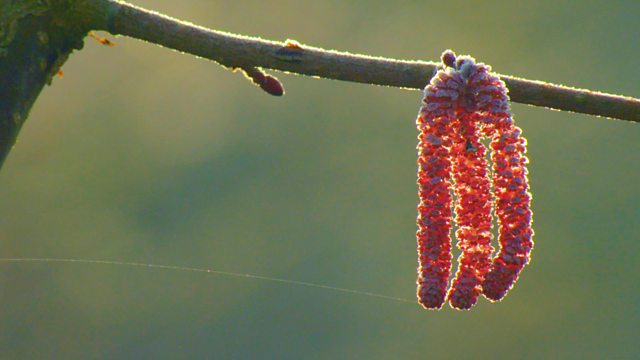
Tropical plants require a humid atmosphere. Mist plants daily, or, better, place on a tray of damp gravel, expanded clay granules (Hydroleca) or recycled lightweight aggregate (Hortag). Plants grouped together will create a humid micro-climate around their leaves.
The Essential Guide to Pruning Ornamental Garden Trees – Gardeners World episode 3 2016
Why Pruning is Crucial for Ornamental Trees
Pruning, an essential aspect of gardening, plays a significant role in maintaining the health, safety, and aesthetics of ornamental garden trees. By removing dead, diseased, or damaged branches, pruning helps prevent the spread of disease and insect infestation. It also stimulates new growth, ensuring that the tree’s shape and size complement the overall garden design.
The Best Time to Prune
Timing is critical when it comes to pruning ornamental trees. Generally, late winter or early spring, when the tree is dormant, is the ideal time. This timing prevents sap loss in trees that bleed and reduces the risk of disease transmission.
Techniques and Tools for Effective Pruning
Selecting the Right Tools
The right tools are paramount for effective pruning. Essential tools include sharp, clean pruning shears for small branches, loppers for medium-sized branches, and a pruning saw for larger branches. Always ensure that the tools are clean and sharp to make precise cuts and prevent disease transmission.
Pruning Techniques
Understanding different pruning techniques is crucial. Thinning out involves removing entire branches to open up the tree canopy, improving air circulation and light penetration. Heading back involves cutting back branches to a bud to encourage dense growth. It’s vital to make cuts at a 45-degree angle, just above an outward-facing bud, to promote healthy regrowth.
Safety Measures and Best Practices
Prioritizing Safety
When pruning, safety should always be a priority. Wear protective gear, including gloves and safety glasses, and be mindful of your surroundings, especially when using ladders or power tools.
Pruning Best Practices
Start by removing dead, diseased, or damaged branches. Then, assess the tree’s shape and remove any branches that cross or rub against each other. It’s important not to over-prune; generally, removing more than 25% of a tree’s canopy in one season is not recommended.
Common Mistakes to Avoid in Tree Pruning
Over-Pruning and Topping
One of the most common mistakes is over-pruning, which can stress the tree and make it more susceptible to disease and pests. Topping, or cutting off the top of the tree, is also harmful as it can lead to weak new growth and tree decline.
Improper Cuts
Avoid making flush cuts against the trunk or leaving large stubs. Both can hinder the tree’s natural healing process and increase susceptibility to pests and diseases.
F.A.Q. about Gardeners World Episode 3 2016 – Sowing Annual Climbers and Mulching Borders
Q.: What was the main focus of Monty Don in Gardeners World episode 3 2016?
A.: In this episode, Monty Don concentrated on beginning the sowing of annual climbers and engaging in the initial stages of mulching his garden borders. This episode was part of his preparation for the upcoming summer, emphasizing the importance of these gardening tasks in achieving a vibrant and healthy garden.
Q.: Why is pruning ornamental trees important, as discussed in the episode?
A.: Pruning ornamental trees is crucial for maintaining their health, safety, and aesthetics. It involves removing dead, diseased, or damaged branches, which helps prevent the spread of disease and insect infestation. Pruning also stimulates new growth and ensures that the tree’s shape and size complement the overall design of the garden.
Q.: What are the ideal conditions for growing kale, as mentioned in the episode?
A.: Kale, known for its nutritional properties, thrives in cold weather better than most other brassicas. It requires a lightly shaded position and should be netted against birds. The leaves of kale should be picked when they are young and tender for the best quality.
Q.: How should celery be grown according to the guidelines provided in the episode?
A.: The episode suggests that celery, originating from boggy riversides and marshy ground, needs moisture-retentive soil that never dries out. For a tastier yield, the celery hearts can be eaten raw or braised by simmering, providing a clue to the plant’s preferred growing conditions.
Q.: What care do houseplants require as discussed in Gardeners World episode 3 2016?
A.: Houseplants, varying in shapes and sizes, require regular watering and feeding, and most need little additional attention. They generally thrive in warm rooms with even temperatures and need bright filtered light. In winter, some may benefit from being moved to a lighter position, such as nearer a window, as long as the minimum required temperatures are maintained. Avoid placing plants near open fires, radiators, in draughts, or on windowsills on frosty nights.
